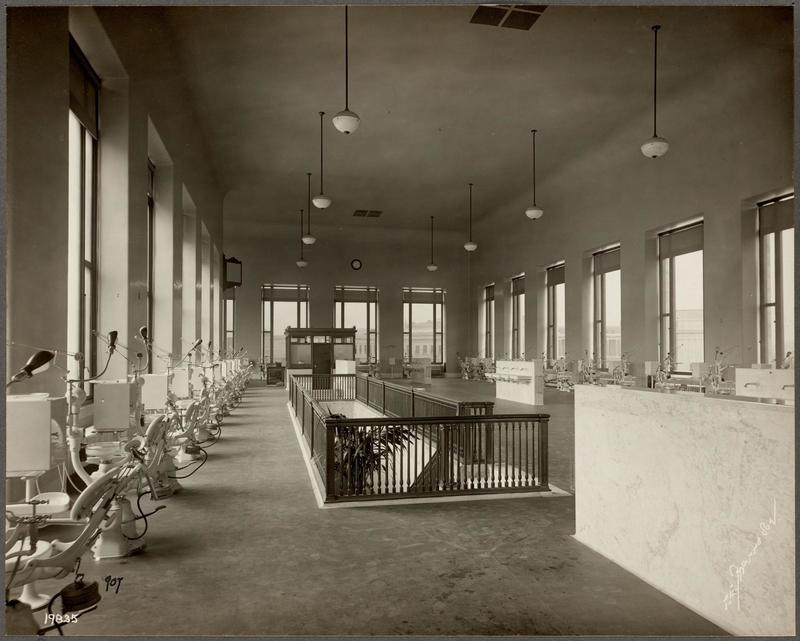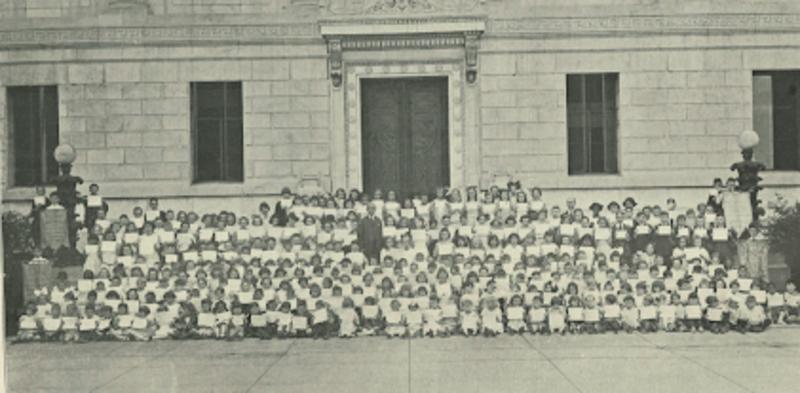Early steps towards universal children’s healthcare
At the beginning of the twentieth century, interest in public health and child welfare grew.
Local Boston physicians also began to recognize that public health needs were not being met. John and Mary Forsyth established the Forsyth Institute to address some of these needs.
At its opening, Thomas Forsyth remarked, “the Infirmary should be a home to the children, beautiful and cheerful; a protector of their health, a refuge in their pain.” The clinic funded dental and medical checkups and treated oral and craniofacial problems with a focus on the prevention of cavities that would lead to further health complications.
Following rising cases of scarlet fever and tuberculosis in 1922, the epidemiologist of Boston Health Department ordered school physicians to conduct a second “general inspection,” a standard medical checkup. Throughout the school year, nurses were responsible for monthly dental, vision, and hearing checkups. Records followed pupils from kindergarten through secondary school so that there could be follow-up medical consultations with public health nurses. There were, of course, still cases of illness throughout the year. But because of the acute focus of school nurses on identifying contagious diseases, schools became more a place of detection than of infection.
Read more about the history of the Forsyth Institute on their website.
This post was written by Mavis Reardon, a student in the History 380 (Fieldwork) Class at Simmons University. For more information about this class's work studying the history of the West End, see our introductory post to this blog series.



